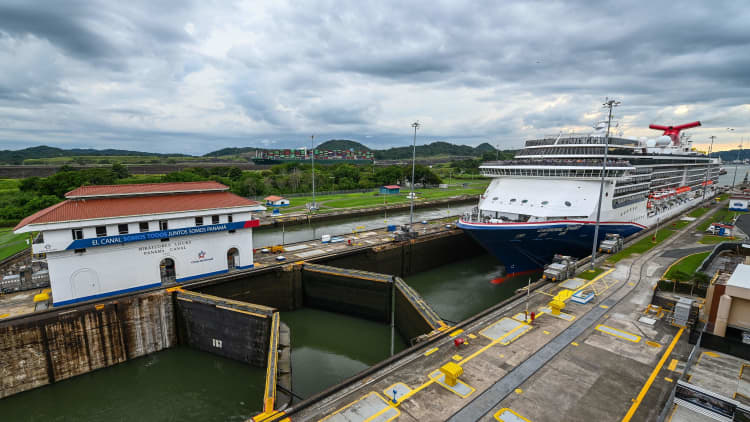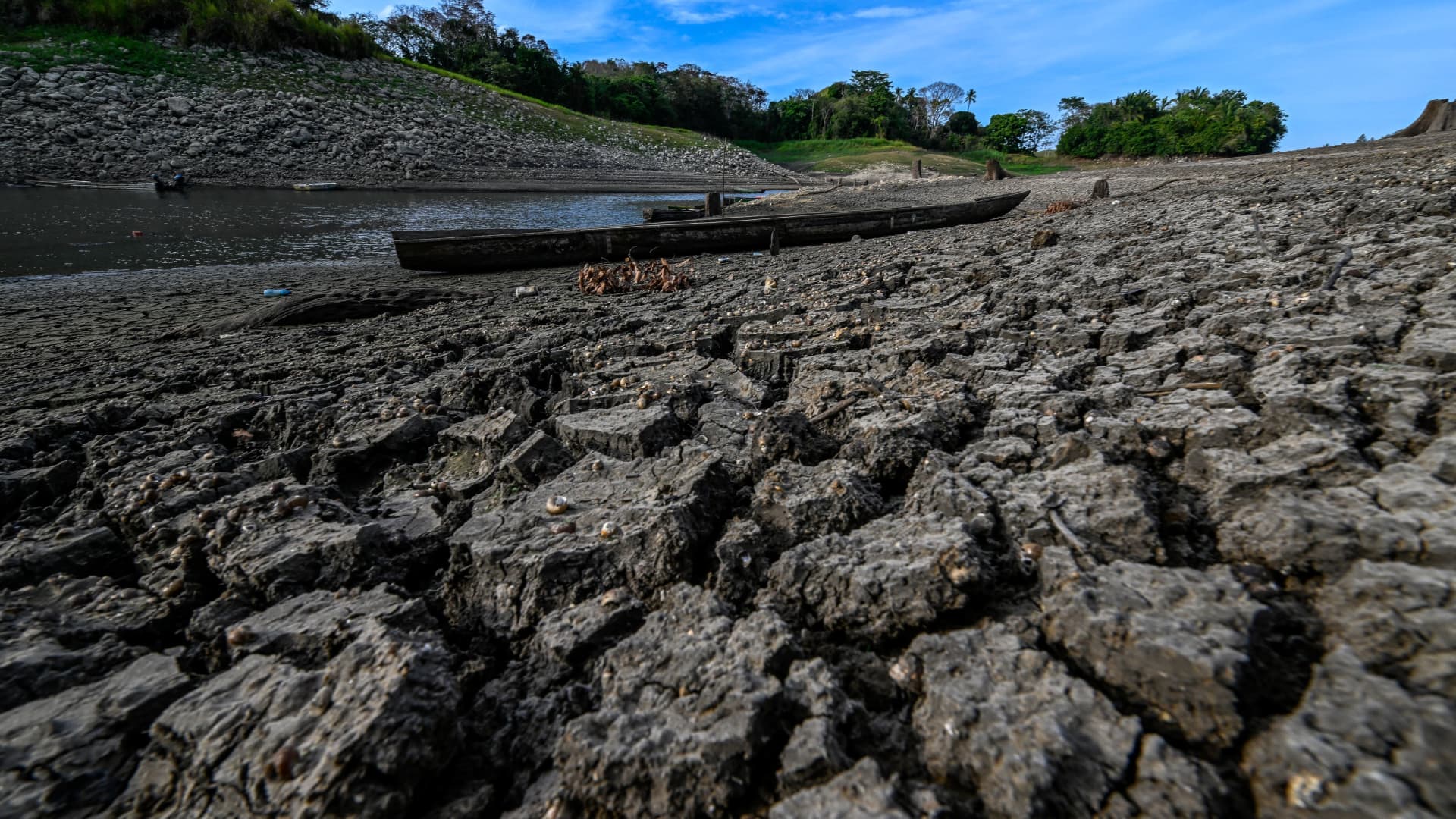View of stranded boats at Alhajuela Lake during the summer drought, in Colon province, 50 km north of Panama City, Panama, on April 21, 2023. The Alhajuela lake is one of the main lakes that supplies water to the locks of the Panama Canal and is at its lowest level of recent years.
Luis Acosta | Afp | Getty Images
The Panama Canal drought conditions have led shipping giant Maersk to inform clients this week that vessels with freight from Oceania (Australia and New Zealand) will no longer traverse the canal because of the ongoing low water levels. Maersk will be servicing the client’s containers by using a “land bridge.”
Instead of going through the Panama Canal, the vessels would call the Ports of Balboa, Panama, on the Pacific side — dropping off cargo heading for Latin America and North America and picking up cargo heading for Australia and New Zealand. The Port of Manzanillo, Panama, on the Atlantic side, will be used for dropping off cargo heading for Australia and New Zealand and picking up cargo heading for Latin and North America. Once at the port, containers would be loaded or unloaded and would then move via an existing rail over a distance of 80 kilometers across Panama to be picked up by another vessel. The change in service covers two transits per week, according to Maersk.
A severe drought has led to water depth and weight restrictions on ships passing through the Panama Canal, and additional container surcharges imposed by ocean carriers on shippers for months.
“Based on current and projected water levels in Gatun Lake, the Panama Canal Authority (ACP) has needed to make reductions to the amount and weight of vessels that can pass through the canal. Whilst we continue to work closely with the ACP, moderating and aligning our operations to fit the changes, we have made changes to services to ensure that our customers are impacted as minimally as possible,” Maersk’s client advisory stated.
Maersk emphasized there would be no delays for Northbound cargo stopping in Philadelphia and Charleston. Companies like McDonald‘s import their Wagyu Beef from Australia and use this route to import their beef into the East Coast.
For the Southbound vessels, Maersk cautioned customers may experience some delays.
The company is also eliminating the shipping route to Cartagena, Columbia.
The Panama Canal Authority has increased the number of transit slots to 24 daily this month after first announcing a reduction of vessel transits to 18 in February. But this is far below the daily transits of 36.
The Panama Canal is popular for East Coast trade because it is faster than other options. The shipping time for ocean cargo from Shenzhen, China, to Miami, Florida, using the Suez Canal takes 41 days. Traveling through the Panama Canal takes only 35 days. The latest water level issues for the canal come as it is expected to receive additional vessel traffic as ocean carriers avoid the Red Sea due to the ongoing Houthi attack risk, with Maersk among shippers that recently had to halt Red Sea traffic.
Forty percent of all U.S. container traffic travels through the Panama Canal every year, which in all, moves roughly $270 billion in cargo annually.
Late December to April is traditionally Panama’s dry season.
According to the PCA, it takes around 50 million gallons of fresh water to move a vessel through one of the locks. The Panamax locks lose more water compared to the Neo-Panamax lock. The Neo-Panamax locks have a water recovery system which can reclaim 60% of the water used during a vessel’s transit through the locks. The Panamax lanes do not have the water-recapturing ability of the Neo-Panamax locks.
Maersk stressed that as a whole it is not bypassing the Panama Canal, but its decision related to the Oceania freight will impact the declining cargo volume passing through the Panama Canal. In 2023, it was reported 510 million tons of cargo traversed the canal, which was eight million tons less than 2022. Even with the decrease in volumes, the Canal Authority reported record revenue from October 2022 to September 20, 2023. Surcharges and other charges added to cross the canal fueled the revenue increase. From October 1, 2022- September 30, 2023, the PCA received $3.3 billion. That was $319 million higher than a year earlier.
The Panama Canal Authority said its multimodal transportation system is a way that maritime customers, such as Maersk, and the PCA itself can cope with the impacts of climate variability worldwide and the current water shortage at the canal. “We will continue to support Maersk’s operations. … We are focused on delivering both short- and long-term solutions for our customers, for when climate anomalies affect our operations,” it said in a statement to CNBC.


